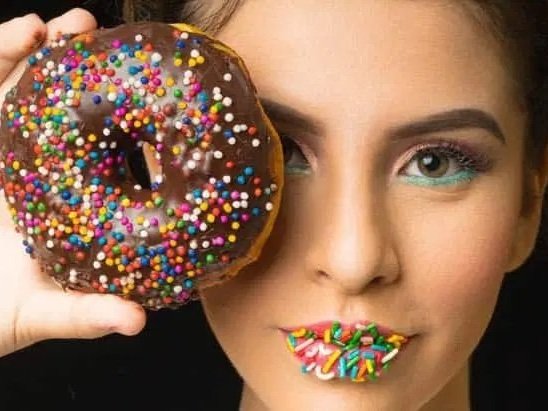Beyond the Scroll: Why Your Brand Needs Sensory Marketing 🍣🎧👇🏼
Brands embracing the 5 senses, like Rhode, are winning at creating experiences that consumers can relate to.
In a digital landscape saturated with polished noise, consumers are craving something real. Authenticity and genuine connection have become the cornerstones of brand loyalty. This is where sensory marketing steps in, transforming the way we engage with our audiences.
Sensory Marketing: Selling the Experience, Not Just the Product
This strategy transcends traditional marketing by focusing on the holistic experience. It’s about triggering emotions and memories through the strategic use of our five senses: sight, sound, touch, smell, and taste. By creating a multi-sensory environment, brands forge deeper connections, leading to increased brand awareness, enhanced engagement, and ultimately, boosted sales.
Multi-pronged imagery invokes multiple touch points that reinforce resulting in more memorable interactions.
The Power of Sensory Engagement
At its core, sensory marketing aims to:
Evoke Emotional Connections: Foster a stronger bond between consumers and your brand.
Create Immersive Experiences: Stimulate multiple senses simultaneously, resulting in richer, more memorable interactions.
Influence Consumer Behavior: Shape perceptions, preferences, and purchasing decisions through sensory appeal.
Enhance Brand Perception: Elevate your brand image by creating a distinct sensory identity.
Leading the Sensory Revolution
Several brands are mastering this approach, demonstrating its immense potential:
Hailey Bieber's skincare line excels at blending beauty with culinary inspiration. Terms like "Glazing Milk" and "Cinnamon Roll Lip Treatment" create a powerful visual and tactile experience, while their strategic use of social media and collaborations amplifies this sensory appeal.
This brand leverages scent marketing to its fullest, coupled with vibrant visuals that transport consumers to a tropical paradise. Their ability to convey scent through imagery is a testament to the power of visual sensory marketing.
Their social media presence is a masterclass in visual and tactile marketing. Close-up shots of their textured cookies generate a strong sense of desire and taste.
Disney:
A classic example of multi-sensory mastery, Disney creates immersive experiences through carefully curated sounds, scents, visuals, and tactile elements in their parks, stores, entertainment, and prodcutions.
Food-Centric Marketing:
Many brands are now using food related imagery, and terms to describe their products. This creates feelings of nostalgia, and comfort, in the consumer.
Emerging Trends:
The rise of e-commerce has spurred innovation in digital sensory experiences. Brands are exploring virtual try-ons, like at Warby Parker, and other technologies to bridge the gap between online and in-person shopping.
Why Embrace Sensory Marketing?
Emotional Resonance: Sensory experiences forge deeper emotional connections, leading to increased brand loyalty.
Enhanced Memorability: Multi-sensory interactions are more memorable, boosting brand recall.
Competitive Differentiation: Sensory marketing allows brands to stand out in a crowded marketplace, creating a unique and impactful identity.
In 2025, and beyond, sensory marketing will be a critical tool for brands seeking to create lasting impressions. It’s not just about selling a product; it’s about crafting an experience that resonates on a deeper, more emotional level. By strategically engaging the senses, your brand can cultivate authentic connections and thrive in an increasingly competitive market.





